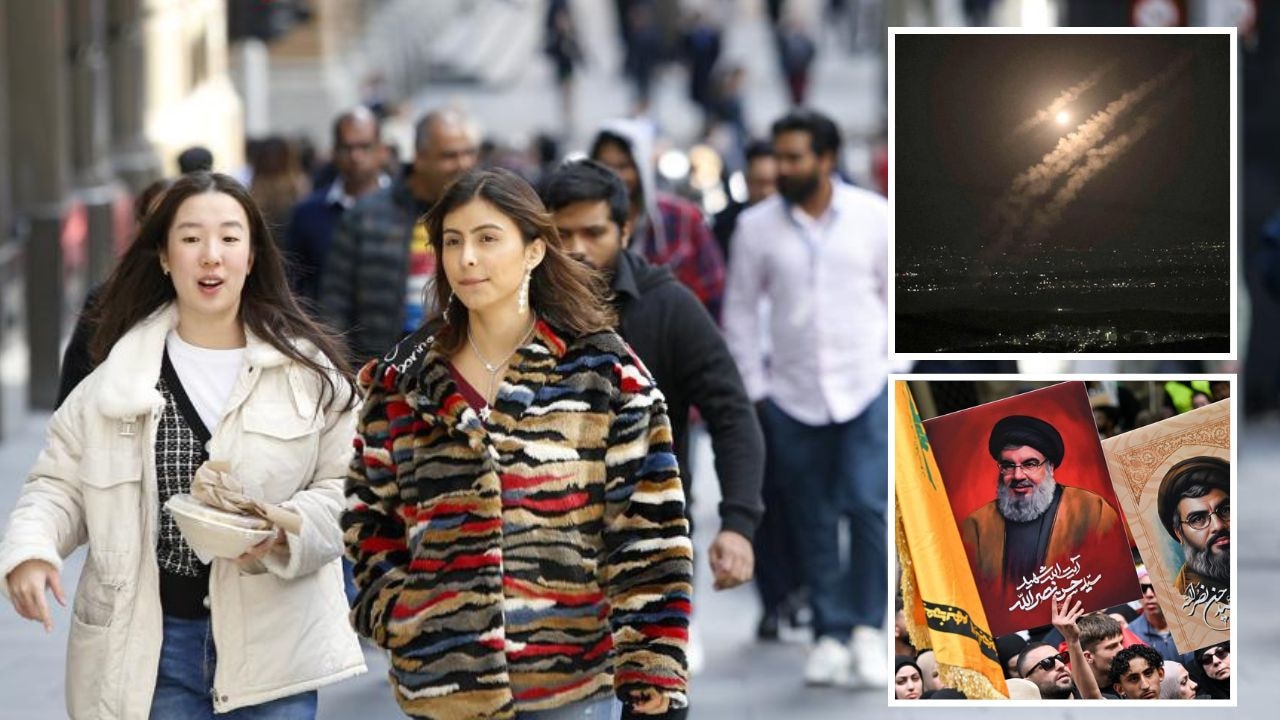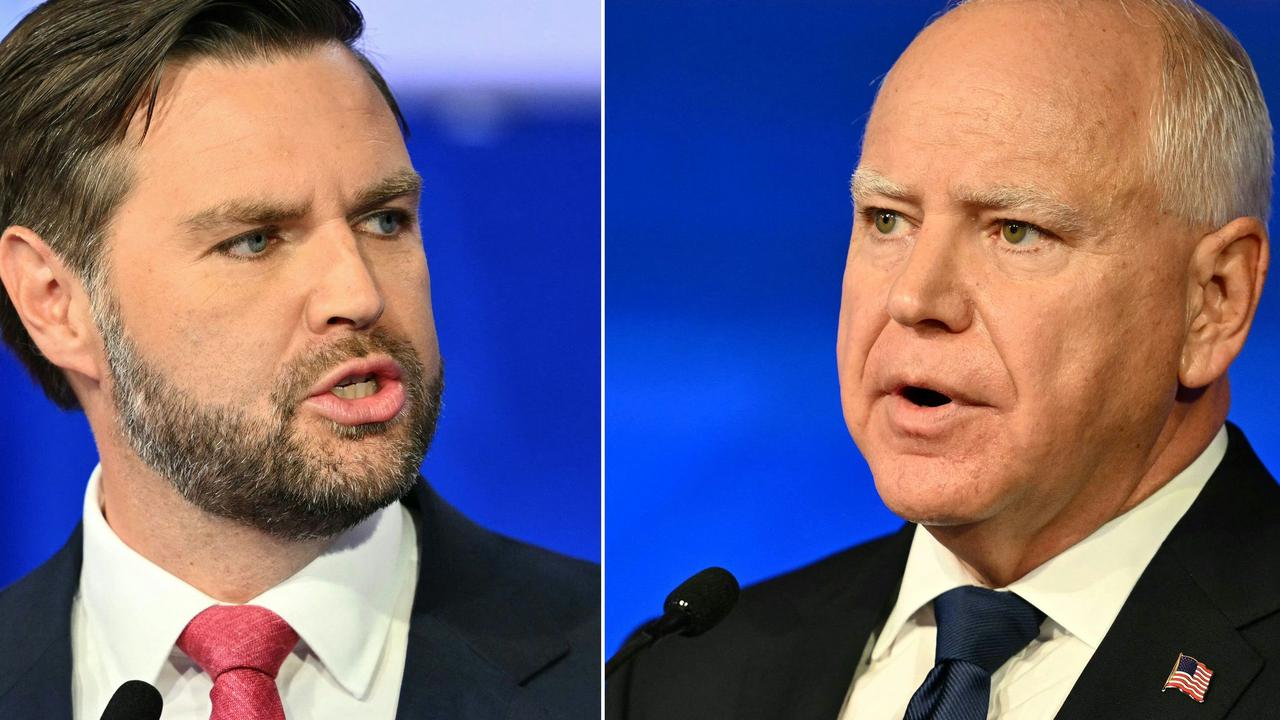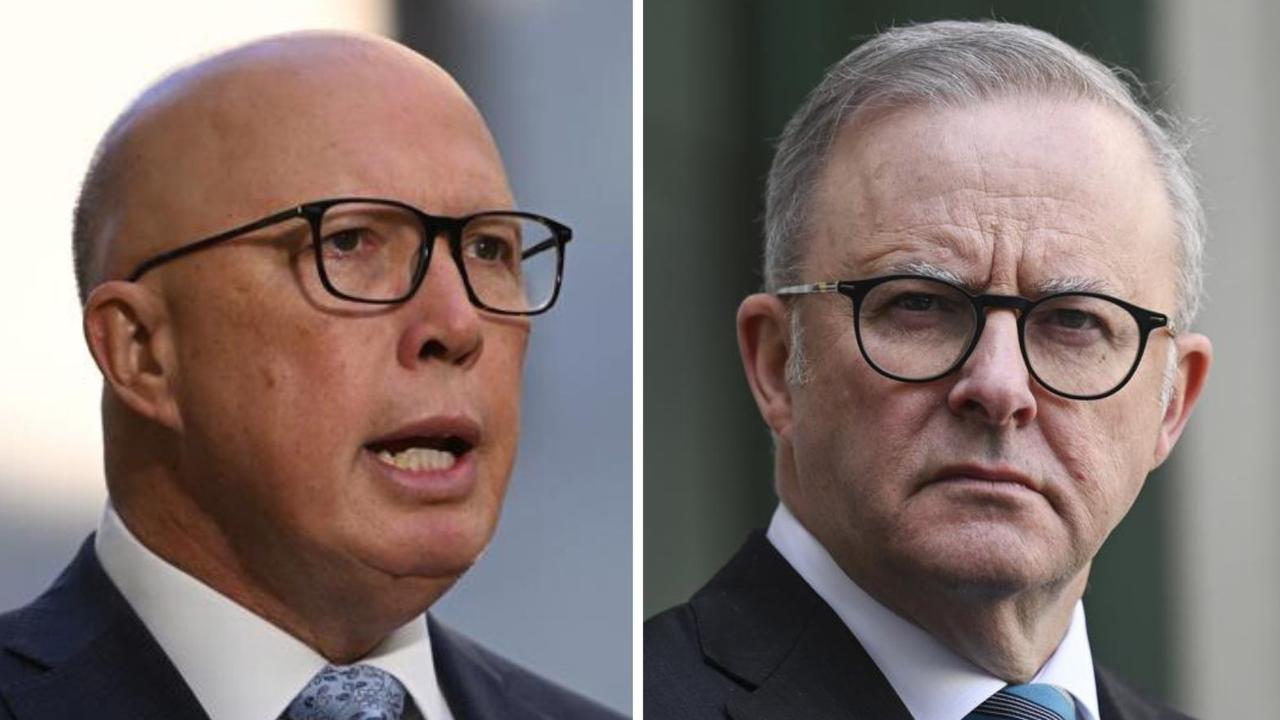‘Entire region on the brink’: Middle East enters danger zone after Hezbollah leader assassinated
The assassination of Hezbollah’s leader has backed the terror group into a corner as the region enters a critically dangerous period.

World
Don't miss out on the headlines from World. Followed categories will be added to My News.
It’s crunch time in the Middle East.
Israel has backed Iran and Hezbollah into a corner. The time for talk is over. Dithering is not an option. Now all key players have little choice but to decide – surrender, or all-out war.
Almost a year after Hamas launched its surprise October 7 terror attack out of Gaza and into Israel, Prime Minister Benjamin Netanyahu’s government’s relentless escalation of the conflict has put the entire region on the brink of conflict.
Hezbollah has lost dozens of commanders in air strikes and the detonation of thousands of booby-trapped pagers and handheld radios over the past two weeks.
The death of its top leader, Hassan Nasrallah, in an underground bunker in Beirut has caused his patron – Iran’s Supreme Leader Ayatollah Ali Khamenei – to be whisked away to a heavily protected hide-out somewhere inside Iran.
And everyone involved is vowing to take the fight to the next level.
“Those who strike at us, we will strike at them,” Prime Minister Netanyahu declared at the weekend.
“There is nowhere in Iran or the Middle East beyond the reach of the long arm of Israel, and today you know how true that is.”
Iran, of course, also had something to say.
“The blood of the martyr shall not go unavenged,” Supreme Leader Khamenei insisted in reply. He called upon all Muslims “to stand by the people of Lebanon and the proud Hezbollah with whatever means they have and assist them in confronting the … wicked regime of Israel”.
Meanwhile, Hezbollah – with the bulk of its command network killed or disabled – is an enraged but wounded tiger.
“The winner of the next all-out war between Hezbollah and Israel will be the one that ‘goes first and goes big’ and thus eliminates the other’s second strike capacity,” warns Atlantic Council think-tank analyst William Wechsler.
“That would be a tremendous roll of the dice for any Israeli prime minister to make, one that risks a worst-case scenario with tens of thousands of Israelis dead or wounded.”
A matter of choice
“Nasrallah’s death marks both the end of an era and the beginning of a new one,” adds Atlantic Council think tank Middle East director Jonathan Panikoff.
“How these actors resolve their strategic quandaries in the coming days will determine whether the Middle East and the world can avoid sliding into catastrophic conflict.”
Netanyahu’s hard line tactics pose a significant risk to both Israel and its neighbours.
And the imperative of Hezbollah’s surviving warlords and Iran’s autocratic clerical regime not to lose face among their followers may force their hands.
“Although Israeli leaders believe that intensified military action will cause the militant group to back down, this sort of ‘escalate to de-escalate’ strategy seldom achieves the desired results,” argues Centre for American Progress analyst Andrew Miller.

Hamas, while not destroyed, has been severely degraded. Some 17,000 of its fighters are counted among the 41,000 killed by Israel’s air and ground attacks in Gaza. And its leadership has also been decimated.
And Israel’s espionage and military successes over the past fortnight have been extraordinary.
There’s little doubt Hezbollah, with its 50,000 fighters and tens of thousands of rockets and missiles, is in disarray.
“It may be that Israel sees the current situation, one with presumably less effective Hezbollah command, control, and communication systems, and with Lebanese civilians fleeing from the areas of greatest vulnerability, as the best environment imaginable to successfully pre-empt (any) response,” says Wechsler.
But Centre for Strategic and International Studies (CSIS) professor Daniel Byman says Israel is resorting to tactics that have failed to succeed in the past.
“Although the Israelis repeatedly killed senior Hamas figures, the organisation regrouped under new leaders and kept on fighting,” he writes.
“In addition, assassinations can lead groups to escalate with international terrorism, and Hezbollah’s own history shows this painfully.”
Hezbollah’s turning point
“Today, Hezbollah is diminished, decapitated, and in disarray,” says Wechsler.
Its leadership is dead or wounded. Its faith in its communications and electrical technology is shattered. And its ability to launch overwhelming volleys of rockets and missiles into Israel is now questionable.
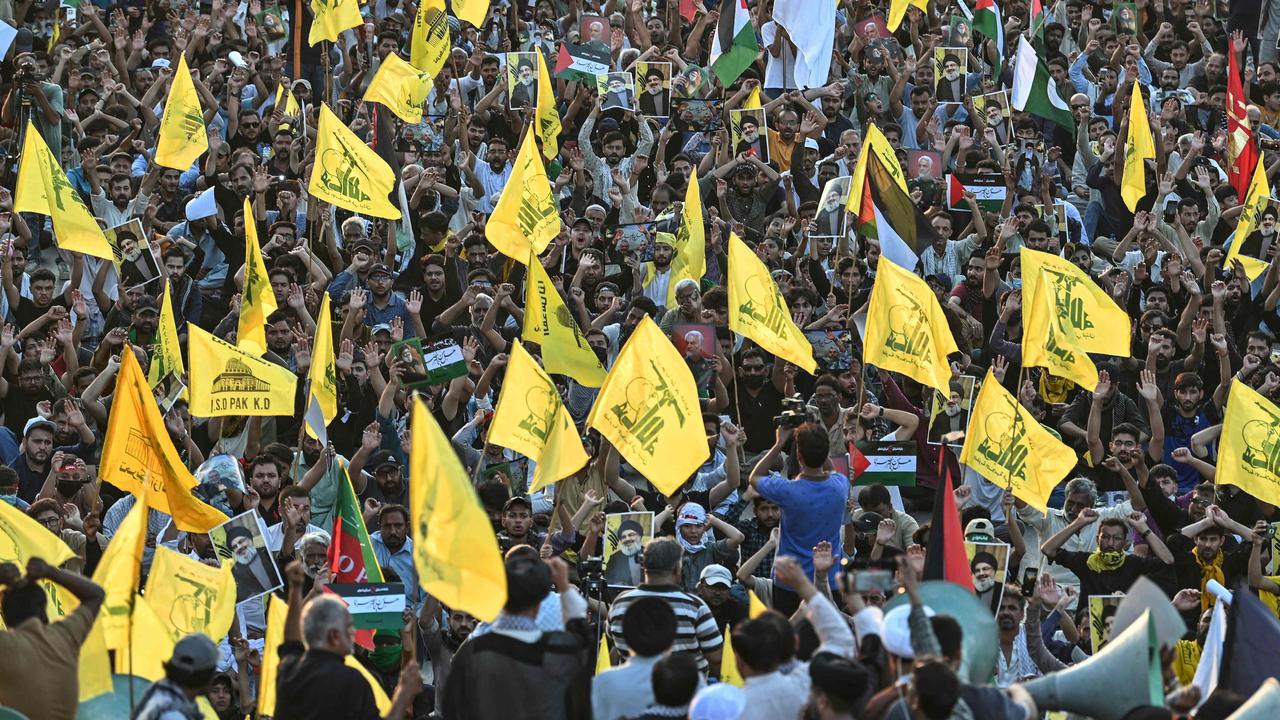
“With these operations, along with the operations in Syria and Iran, the Israeli Defense Forces and Mossad have regained much of the credibility they lost on October 7,” the Atlantic Council senior director of the Middle East Program argues.
But will Hezbollah be deterred or incited?
“Strategically, the events of the last few months have demonstrated that Hezbollah can’t deter Israel from attacking the group,” argues Panikoff.
“To also not meaningfully respond to Nasrallah’s death is likely to be viewed by the group’s leadership as inviting additional, more broad attacks.”
Israel insists it is prepared to send troops into southern Lebanon to force Hezbollah’s fighters north of the Litani River, some 29km inside Lebanon’s territory and outside of the easy striking range of northern Israel.
The death of Nasrallah may be seen by Netanyahu as an unmissable opportunity to do so.
“Nasrallah’s death promises to fundamentally change politics in Lebanon, potentially the group’s future as Iran’s most critical ally in the region, and how Israel views the group,” Panikoff adds.
“(But) if Hezbollah feels increasingly cornered by Israel’s attacks – as it probably does with its leadership decimated and responses until now ineffective – it likely lowers the bar for not only meaningful retaliation but for a kinetic response that might be viewed as excessive, or even irrational.”
Byman believes history is against Israel’s immediate success.
“It is rare that such groups are defeated solely by the removal of a key leader, even one as formidable as Nasrallah,” the CSIS professor writes.
“Israel has killed leaders of a wide range of Palestinian groups, including Hamas, Palestinian Islamic Jihad, the Popular Front for the Liberation of Palestine, and many, many others. For the most part, these groups kept on fighting.”

Iran in a bind
“Everyone should be aware that the situation is extremely explosive, and that everything is possible … even war,” Iranian Foreign Minister Abbas Araqchi told local media, adding that “this horrible crime … will not go unanswered”.
Iran does not recognise Israel’s right to exist.
It rejects the 1949 decision by the United Nations to partition Palestine to include a new state of Israel.
It points to Israel’s invasion of and ongoing occupation of large swathes of Palestinian territory as justification for this stance.
And Iranian foreign ministry spokesperson Nasser Kanaani at the weekend vowed that Hezbollah leader Nasrallah’s “path will be continued and his holy goal will be realised in the liberation of Jerusalem”.
But Israel is also a wedge in Islam’s Sunni and Shia political divide.
Iran enforces Shia Islam – which believes the descendants of the Prophet Muhammad’s son-in law, Ali, should be its divinely inspired leaders. Sunni Islam dogma is established by community-elected caliphs.
As part of this struggle, Iran has nurtured separatist groups across the Middle East, including in Lebanon (Hezbollah) and Yemen (Houthis).
This is why the appearance of strength is a vital consideration for Supreme Leader Khamenei.
“Launching a widespread and intense response that triggers a larger regional war – the exact response many in Israel are hoping for – may help Iran exact a bigger cost from Israel for killing Nasrallah and other Hezbollah leaders,” argues Panikoff.
“Doing so would bolster its own legitimacy with its proxies. Tehran may reckon that if Israel concludes there is no meaningful price to pay for its actions, it will be more likely to come after Iran directly in the near future.”

But its large-scale April missile and drone strike against Israel failed. And further failure will only weaken Khameinei’s power.
So, Khamenei may be looking for other options.
“Iran … may turn to international terrorism, given its desire to hit Israel and the paucity of other options,” warns Professor Byman.
But it has an even more fearful option.
“It may be that Khamenei decides, given the potential loss of the crown jewel of his proxy network and his local deterrent to an Israeli strike, that the time is right to become a nuclear power,” states Wechsler.
Earlier this year, US analysts warned Tehran may need as little as two weeks to produce a functioning nuclear warhead.
But doing so would invite immediate US military intervention.
“These are all highly risky decisions, but very real scenarios for the days to come,” says Wechsler.
“It would be far better if Hezbollah simply halted the war it started and retreated back beyond the Litani River.”
Israel in the hot seat
Prime Minister Netanyahu says the assassination of Nasrallah was a move towards “changing the balance of power in the region for years to come”.
He continues to paint the intense strikes on Lebanon as part of a campaign to enable 60,000 residents of northern Israel to return home after being displaced by Hezbollah rocket attacks on October 8, the day after the Hamas terror raids.
Israeli media reports the Israel Defence Force (IDF) as saying any delay would allow Hezbollah to re-establish its command network.
Israeli army spokesman Roni Kaplan said at the weekend that a ground invasion is “still on the table”.
“If Hezbollah does not move north to restore normalcy, we will continue gradually and with increasing intensity to strike the terrorist group and its leaders until the population can be safe,” he told local media.
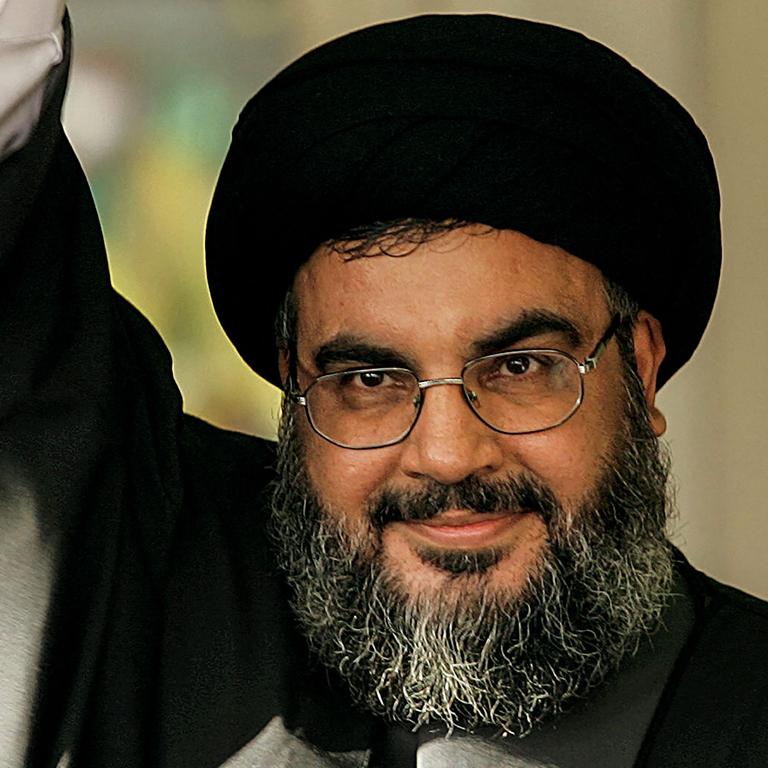
“A ground invasion is not ruled out, but it is not confirmed either.”
Israel’s military is on a high.
“Israel’s operations show it has fully penetrated Hezbollah’s communications network and that its intelligence services have superb intelligence on the group in general,” says Professor Byman.
“Leaders in this situation face a choice: They can communicate and organise their forces – and die – or they can hide out and thus allow their organisations to drift without direction.”
But the bar for victory is much higher for Israel than it is for Hezbollah, adds Panikoff.
“Iran succeeds if it can successfully strike Israel and inflict damage; the bar for success for Hezbollah is to inflict damage in Israel and survive with the group’s core intact. Israel, meanwhile, is maintaining maximalist objectives, including what Netanyahu called the need to ‘degrade Hezbollah’ until it no longer poses a threat,” he writes.
But Netanyahu has yet to define what that means.
“(Israel) has a window in which it has never been stronger, its enemies never weaker, and the potential for assistance never greater from like-minded Arab leaders, who similarly despise Hamas and Hezbollah,” writes Wechsler.
“But the central mistake has been Netanyahu’s refusal to offer a vision for peace for Palestinians in Gaza and the West Bank.”
The alternative is to repeat past attempts at military occupation.
“This disastrous course would only encourage Israeli extremists, serve to validate Israeli’s antagonists, and further its own self-isolation,” Wechsler warns.
Jamie Seidel is a freelance writer | @JamieSeidel
Originally published as ‘Entire region on the brink’: Middle East enters danger zone after Hezbollah leader assassinated




